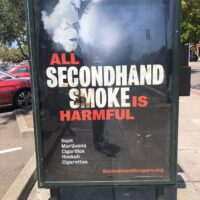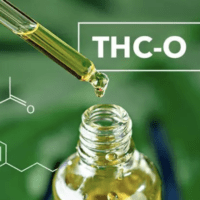
DOWNLOAD A FLYER ABOUT CANNABIS CONSUMPTION LOUNGES IN CALIFORNIA.
See a List of Cannabis Consumption Lounges in California.
Also see: Cannabis Consumption Lounges: Mitigating Risks
Information about opening and operating a consumption lounge from Cal NORML board member and attorney Lauren Mendelsohn.
CANNABIS CONSUMPTION SPACES ARE NEEDED IN CALIFORNIA
While it’s legal for adults and medical patients to possess and grow marijuana in California, using it can be a problem. Unlike tobacco or alcohol, cannabis is illegal to consume in any public place – even in edible form. That leaves only private establishments and residences as places to enjoy a product made legal by California voters in 2016.
Smoking and vaping are even more problematic. Under current law, they are legal only where tobacco smoking is permitted. That rules out all private indoor meeting rooms, restaurants, clubs, hotels, convention centers, etc.; also any businesses with liquor permits. Some California cities have even gone so far as to pass “no-smoking” bans in multi-unit dwellings, effectively depriving private apartment residents of any legal place to inhale, even for medical purposes.
California cannabis consumers are accordingly in need of more legal spaces where they can socialize and partake. To this end, state law allows local governments to let licensed dispensaries open “consumption lounges,” where patrons can smoke or otherwise consume marijuana as in Amsterdam’s famous coffee shops. A score of such establishments have opened across California, with local approval and public safety measures in place.
Under current law, such lounges can only serve cannabis and pre-packaged foods. In 2023 AB 374 by Asm. Matt Haney (San Francisco), which would have authorize local governments to let licensed consumption lounges prepare and sell fresh food and beverages, as well as tickets for events, was vetoed by Gov. Newsom, who invited the author to re-submit it next year with protections for workers against second-hand smoke. Public health groups voiced opposition on the spurious grounds that secondhand marijuana smoke is as dangerous as tobacco smoke, and would therefore expose workers to unacceptable health risks. Of course, it might well be asked why workers at cannabis lounges would object to smelling marijuana smoke in the first place; many might well welcome the opportunity. As in the case of commercial kitchens, workers can be protected by reasonable ventilation measures.
CANNABIS SMOKE IS NOT TOBACCO SMOKE
The scientific evidence is clear that marijuana smoke is not as dangerous as tobacco smoke. This might seem surprising, since marijuana and tobacco smoke share chemical similarities. Both are produced by the combustion of dried leaf, which produces numerous known carcinogens and toxins, such as benzene, formaldehyde, acetaldehyde, et al. Yet longitudinal studies of human subjects have found that marijuana smoking, unlike tobacco, does NOT cause lung or respiratory cancers, even in long-term heavy users. [“Cannabis Exposure and Lung Health”].
There are various explanations as to why this is so. First of all, marijuana users typically smoke far less than cigarette smokers – on the order of a half gram or two per day, versus twenty grams for one pack of cigarettes. Secondly, there are significant chemical differences between cannabinoids and nicotine: tobacco contains potent nicotine-related carcinogens not found in cannabis, while cannabinoids have distinctive anti-carcinogenic properties.[1] There may also be differences in how the two kinds of smoke are absorbed by the lungs. It is notable that the odor of marijuana typically clears the room the next day, while nicotine leaves a lingering, stale odor.
An exhaustive review of the health effects of marijuana by the National Academy of Sciences, accordingly found “no statistical association between cannabis smoking and the incidence of lung cancer.”[2] Other studies have failed to find evidence that cannabis smoking is a significant risk factor in emphysema[3] or cardiovascular disease.[4]
Given that first-hand smoking of marijuana doesn’t cause lung cancer or other serious tobacco-related diseases, it’s all the less likely that second-hand smoking does. This is not to deny that marijuana smoke can be irritating, especially to asthmatics and smoke-sensitive subjects. Chronic pot smoking has been linked to increased risk of bronchitis and infections. It’s therefore essential that non-smokers have the right to be protected from second-hand smoke of all kinds, and that consumption spaces be well insulated from neighbors.
Some anti-smoking purists have suggested that consumption lounges only serve edibles. However, edibles are not conducive to social use, since they require a lengthy time to take effect, and they are particularly likely to invite overdoses.
VAPORIZATION IS HARM REDUCTION
On the other hand, the hazards of smoke inhalation can be virtually eliminated by smokeless vaporizers and e-cigarettes. Vaporizers heat cannabis to a temperature below the point of combustion where smoke toxins and carcinogens form, producing an effectively smokeless stream of cannabinoid and terpenoid vapors. This effectively eliminates toxic particulates and gases, which derive from the 80% of the plant which doesn’t consist of active ingredients (THC and terpenoids).
Vaporizers come in two types. Herbal vaporizers heat raw leaf and buds to the point where they produce vapor but don’t burn and produce toxic compounds (about 180-200° C). Herbal vaporizers have been shown to eliminate virtually all of the carcinogens produced in marijuana smoke,[5] and have proven to be a “safe and effective” delivery method in medical cannabis studies.[6]
Vape pens or e-cigs produce vapor from concentrated cannabis oils, which are distilled to eliminate non-active constituents of the plant. Vape cartridges typically contain very high concentrations of THC (~80%+), but are designed to deliver it in modest dosages per puff like a regular joint. As a result, users obtain a moderate dose of THC and terpenoids with virtually no smoke contaminants. Vaping THC concentrate was shown to eliminate over 99.9% of the cancer risk of smoking in a lab study of e-cigs,[7]
It is important to note that the safety of vape concentrates depends on their purity. An epidemic of fatal EVALI lung disease was caused in 2019-20 by vape concentrates from the underground market which contained a toxic additive to make them vaporize better. No problems were reported with California-regulated vapes. Subsequent improvements in technology have since eliminated the need for additives. Most vape concentrates now consist of virtually pure cannabinoids and terpenoids.
Vaporizers have further advantages in reducing second-hand smoke. Unlike cigarettes and pipes, they emit vapor only while users inhale, eliminating the sidestream smoke generated by burning cigarettes. They likewise eliminate the need for lighters, matches, and ashtrays.
CONCLUSIONS
State-funded anti-tobacco groups have misinformed Californians that second-hand marijuana smoke and vapes pose the same harms as tobacco cigarettes. This notion is false. The scientific evidence clearly shows that marijuana is safer than tobacco, and vaporization is safer than smoking. Not a single epidemiological study has shown that second-hand marijuana smoke, much less vapor, is a workplace exposure hazard.
There is no reason that California cannot accommodate safe social consumption spaces for marijuana use while protecting non-users from unwanted smoke exposure. As in the case of commercial kitchens, which also produce smoke, workers can be protected by reasonable ventilation measures. Consumption lounges have a long history in Amsterdam as well as San Francisco, where the S.F. Cannabis Buyers’ Club offered over 10,000 medical patients a safe place to medicate and socialize in the days before Prop. 64.[8]
California NORML advocates the expansion of consumption spaces not only for consumers and medical users, but also visitors in search of a safe and friendly place to inhale.
See a List of Cannabis Consumption Lounges in California.
Also see: Cannabis Consumption Lounges: Mitigating Risks
Information about opening and operating a consumption lounge from Cal NORML board member and attorney Lauren Mendelsohn.
REFERENCES
[1] Melamede R. “Cannabis and tobacco smoke are not equally carcinogenic,” Harm Reduction Journal 21 (2005).
[2] National Academy of Sciences, The Health Effects of Cannabis and Cannabinoids (2017), p. 143.
[3] Ware, M. “Cannabis and the Lung: No More Smoking Gun?” and Tashkin DP “Effects of marijuana smoking on the lung.” Ann Am Thorac Soc 2013; Vol. 10, Issue 3.
[4] Theerasuwipakorn N et al, “Cannabis and adverse cardiovascular events,” Toxicol Rep. 2023; 10: 537-43 10.1016/j.toxrep.2023.04.011;
Ravi D et al. “Association Between Marijuana Use and Cardiovascular Risk Factors and Outcomes,” Ann Intern Med. 2018 Feb 168(3): 187-94 10.7326/M17-1548.
[5] Gieringer D et al: “Cannabis Vaporizer Combines Efficient Delivery of THC with Effective Suppression of Pyrolytic Compounds,” Journal of Cannabis Therapeutics 4 (1) 2004.
[6] Abrams D et al, “Vaporization as a Smokeless Cannabis Delivery System: A Pilot Study,” Clin. Pharm. & Ther. April 2007.
[7] Meehan-Atrash J et al., “Aerosol Gas-Phase Components from Cannabis E-Cigarettes and Dabbing: Mechanistic Insight and Quantitative Risk Analysis,” ACS Omega Sept 16, 2019.
[8] Feldman HW, Mandel J, “Providing medical marijuana: the importance of cannabis clubs,” J Psychoactive Drugs 1998 30(2) 179-86.



